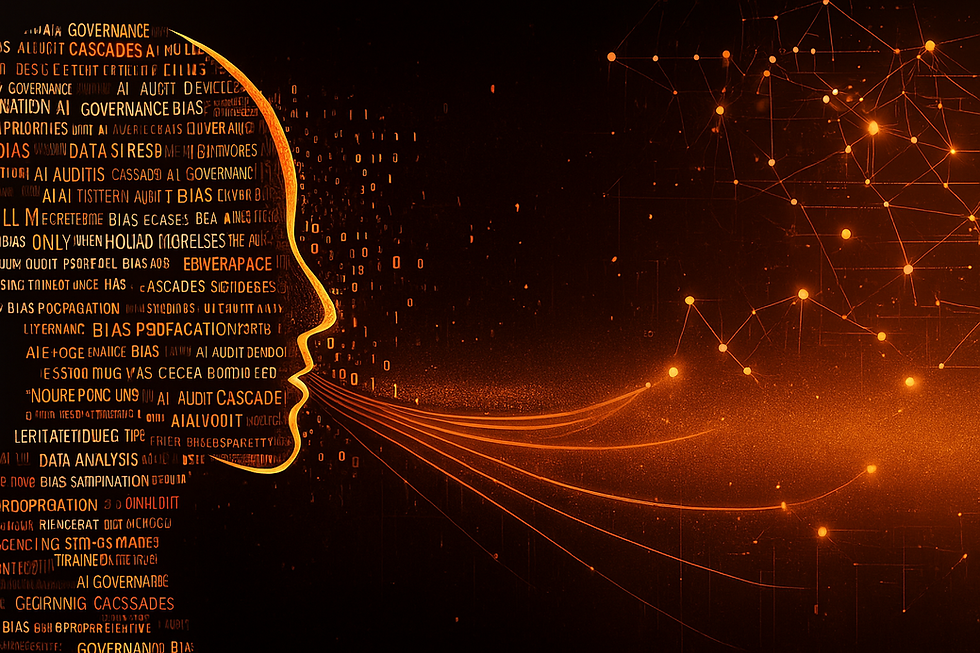AI at a Crossroads: Are We Facing the End of Progress or a New Beginning?
- Dale Rutherford

- Nov 23, 2024
- 3 min read

AI development has undeniably transformed society, powering a wide range of advancements in medicine, automation, communication, and creative industries. Yet, recent discourse suggests that AI's rapid ascent might be facing a critical juncture. This sentiment has been well articulated by Ryan Tseng, who argues in his Medium article that "AI has officially hit a dead end" (Tseng, 2023). What does this provocative statement mean for the future of AI, and how should we, as a community, interpret it? Let's delve into the key points of Tseng's article and explore the broader implications for the AI field.
The Plateau in AI's Evolution
According to Tseng (2023), the stagnation of AI research can be traced to an over-reliance on models that have reached their practical limits. He argues that contemporary AI has stalled because it is built on "scaling up existing machine learning techniques," such as deep learning. While these models have demonstrated impressive capabilities, including natural language processing and image recognition, they inherently struggle with more nuanced forms of understanding—like causality, reasoning, and genuine creativity—which limits their ability to meaningfully evolve.
In many ways, the plateau stems from the inherent limitations of current neural network architectures. Deep learning models excel at pattern recognition, but as Tseng points out, "they are fundamentally incapable of common sense reasoning" (Tseng, 2023). They require vast amounts of data, yet they lack a basic understanding of the world in the way that even a young child intuitively does. This reliance on data instead of understanding suggests that perhaps AI's achievements have been more incremental and less revolutionary than initially believed.
The Cost of Scaling
Another critical critique Tseng makes is the escalating cost and diminishing returns associated with scaling AI models. Scaling has been the prevailing paradigm over the past few years, with tech giants racing to build ever-larger models like OpenAI's GPT-4 or Google's PaLM. However, the larger these models become, the more costly they are to train and deploy, not just in terms of financial resources but also in energy consumption.
Tseng (2023) argues that we have reached a point where "more computing no longer guarantees better performance" when it comes to advancing AI. Increasing computational power has yielded diminishing gains, raising questions about sustainability and ethical deployment. This shift indicates that throwing more data and power at a problem is not necessarily the right solution, especially considering environmental concerns and the financial cost of computing resources.
A Paradigm Shift Needed
Tseng proposes that the solution lies in changing the narrative around what AI can and should do. He suggests that we need a paradigm shift: moving away from brute-force scaling and focusing instead on a deeper understanding of intelligence itself. Instead of building bigger black-box models, the future might involve exploring more biologically inspired approaches or perhaps integrating more rigorous aspects of human cognition into our models.
For example, future AI systems could focus on causal reasoning—understanding patterns and the underlying relationships that connect them. Tseng (2023) advocates for a system that incorporates elements of how human beings learn, drawing from fewer examples, using abstraction, and developing an understanding of concepts rather than rote memorization of data points. Such an approach would push AI from being merely "narrowly competent" to more genuinely understanding the contexts in which it operates.
The Road Ahead: Dead End or a Reimagined Path?
The idea that AI is at a "dead end" (Tseng, 2023) might seem bleak at first glance, but perhaps it represents an opportunity. This deadlock in AI development may force us to reassess our strategies and innovate beyond simply scaling up. It urges us to return to foundational questions: What is intelligence? How do we replicate true understanding? The answers to these questions may not lie in increasing layers in neural networks but in a multidisciplinary approach combining insights from neuroscience, philosophy, and cognitive science.
The current limitations in AI development should not be seen as a conclusion but as a crucial turning point. This moment allows AI researchers to move away from focusing solely on scale and to explore entirely new approaches. By recognizing the shortcomings of existing systems, we may be on the verge of a new era of genuine innovation in artificial intelligence.
Conclusion
Ryan Tseng's article serves as a timely reminder that progress is not always linear. The current limitations of AI—the reliance on large datasets, the energy-intensive nature of models, and the fundamental lack of true reasoning—indicate that perhaps it is time for us to change course. As the AI community continues to wrestle with these issues, we may begin a new and far more profound journey. One where AI is not just bigger but also more intelligent, more sustainable, and ultimately more aligned with the complex realities of human understanding.
Reference
Tseng, R. (2023). AI Has Officially Hit a Dead End. Predict by Medium. Retrieved from https://medium.com/predict/ai-has-officially-hit-a-dead-end-cf260ae5b2de.





Comments